Tomatoes are the holy grail of gardens. Who can say no to all those sweet, juicy balls that ripen in the sun every summer and fill the air with the strong smell of tomato vine?
Without a doubt, it’s one of my favorite plants to grow every year. I grew it in my last garden, in the ground, when I had plenty of room for these big, awkward plants.
But when I moved to a different part of the country and rented a house for a short time with only a deck that could be used for gardening, I thought my tomato dreams would have to be put on hold for a while.
That’s not true! I’ll tell you what I learned and how I grew hundreds of pounds of tomatoes from just a few box plants.
Growing juicy vine-ripened tomatoes is a joy for any gardener. But what if you don’t have the space for a big vegetable garden? Not to worry – with the right techniques you can successfully grow tomatoes in pots right on your patio or balcony.
Follow this beginner’s guide to container tomato gardening and you’ll be harvesting armloads of plump, flavorful tomatoes this summer.
An Overview of Growing Tomatoes in Pots
Tomatoes are one of the most rewarding crops to grow in containers Here’s what you need to know
-
Sunlight: At least 6 hours of direct sun daily is ideal. Move pots as needed.
-
Soil: Use a quality potting mix, not garden soil. Amend with compost.
-
Pot size Go as big as space allows, minimum 10 gallons for bush types, 20 gallons for vines
-
Water: Keep soil consistently and evenly moist but not soggy.
-
Support: Use cages or stakes to support plants as they grow.
-
Care: Fertilize regularly with a tomato fertilizer. Watch for pests and diseases.
Follow the steps below for a bountiful container tomato harvest!
Choose the Best Spot for your Tomato Pots
As a heat-loving crop, tomatoes need plenty of sun to thrive.
-
Place containers in the sunniest part of your patio, deck, or balcony.
-
Try to provide at least 6-8 hours of direct sunlight daily, more is better.
-
If sun exposure is limited, consider supplemental grow lights.
-
Avoid reflected heat off concrete or walls which can overheat plants.
-
Be ready to move pots around to follow the sunlight as daylength changes.
Proper sunlight is vital for robust tomato growth and maximum fruit production.
Select the Best Tomato Varieties for Containers
You can grow just about any tomato variety in a pot, but some are better suited than others.
-
Bush/determinate: Best for containers as they stay compact. Try Red Siberian, Tiny Tim, Patio Choice Yellow.
-
Small cherry types: Also suitable for pots due to their size. Look for Sweet 100, Sungold.
-
Indeterminate/vining: Need large pots and supports but yield prolifically. Try Brandywine, Early Girl, Roma.
-
Paste/sauce types: Often more compact and great producers. See Favorita, Opalka, Amish Paste.
Match variety to your space – small pots = bush or dwarf tomatoes. The sky’s the limit in big pots!
Choose Appropriate Pots for Tomato Plants
Bigger is better when it comes to containers – tomatoes need room for their roots to spread.
-
Use at least a 10-gallon pot for determinate/bush varieties.
-
Go for 20-gallon pots or larger for vigorous indeterminate/vining types.
-
Make sure containers have drainage holes to prevent soggy soil.
-
Self-watering pots and fabric grow bags also work well to control moisture.
-
Use casters under larger pots to move them around as needed.
Don’t skimp on container size – give those tomato roots plenty of room!
Use a Quality Potting Mix
Your potting soil makes all the difference. Avoid dense garden soils that compact too easily.
-
Use a lightweight mix with perlite, coco coir, or vermiculite to maintain fluffiness.
-
Make sure the pH is around 6.5, tomatoes like slightly acidic soil.
-
Use an organic, vegetable-blend potting mix for best results.
-
Mix in compost or fertilizer to provide nutrients tomatoes crave.
-
For big pots, put a layer of rocks or pebbles at the bottom for drainage.
Tomato plants will thrive in a nutrient-rich, well-draining potting medium designed for containers.
Plant Tomatoes Properly in Pots
Give your tomato transplants the best start when planting in containers:
-
Gently remove the plant from its nursery pot, loosen circling roots.
-
Dig a hole slightly wider and deeper than the root ball.
-
Pinch off several bottom leaves to promote better root growth.
-
Place the plant in the pot so the lowest remaining leaves sit just above the soil.
-
Fill in around the root ball with potting mix, pack gently but firmly.
-
Water thoroughly until it drains from the pot’s base to settle the soil.
Proper planting sets up your container tomatoes for healthy, vigorous growth.
Add Support Structures for Tomatoes
Even compact tomato varieties benefit from some type of support structure as they grow.
-
Use short tomato cages or trellises for bushy determinate varieties.
-
Install long tomato towers or sturdy stakes for vining indeterminate types.
-
Add supports when planting to avoid injuring established root systems.
-
Secure plants to supports with soft plant ties or stretchy fabric strips as they grow.
Support structures keep container plants tidy and help prevent damage to branches.
Apply an Organic Mulch Topping
An organic mulch layer helps retain moisture and keeps soil cooler.
-
Good options include wood chips, pine straw, leaves, or compost.
-
Spread mulch 2-3 inches deep immediately after planting your transplants.
-
Replenish as needed, taking care not to pile mulch against the tomato stems.
-
Mulching also suppresses weeds and soil-borne disease organisms.
A proper mulch layer is one of the best things you can do for your container tomatoes.
Water Tomato Pots Thoroughly and Consistently
Inconsistent moisture is one of the main pitfalls for container tomatoes.
-
Tomatoes need about 1-2 inches of water per week from rain or watering.
-
Check soil frequently, water when the top few inches become dry.
-
Water deeply until it drains from the pot’s base. Shallow watering encourages weak roots.
-
Consider using drip irrigation to apply water slowly and directly to the soil surface.
-
Avoid wetting tomato foliage, which can encourage diseases.
Maintaining proper soil moisture is crucial for healthy plants and robust fruit production.
Fertilize Tomato Containers Regularly
Container tomatoes need regular doses of fertilizer to thrive.
-
Use a tomato-specific fertilizer with more phosphorus and potassium than nitrogen.
-
Apply at planting time, then every 2-3 weeks according to label directions.
-
Mix granular fertilizers into the top few inches of soil or use soluble versions.
-
Stop fertilizing 2 months before your first fall frost to allow plants to harden off.
-
Compost teas, fish emulsion, and seaweed extracts also provide nutrients.
Proper fertilization keeps container tomatoes vigorous, productive, and flowering all season long.
Enjoy an Abundant Harvest of Container Tomatoes
With the right conditions and care, your patio or balcony can produce a bountiful tomato crop this summer! Gardening in pots makes it easy to control moisture, temperature, sunlight and nutrients.
By following this container tomato growing guide, even urban gardeners and small-space dwellers can enjoy an abundance of homegrown, vine-ripened tomatoes through the season. So get your containers prepped for a delicious tomato harvest!
Protect young transplants from frost with “walls of water.”
Most of the time, you should wait to plant tomatoes outside until the temperatures at night stay above 45°F.
But in places where the growing season is short or unpredictable, you may need to get them outside earlier (because you never know when it will freeze over). Here in Central Oregon, it’s not unheard of to get frost well into July!.
One way that I protect my transplants in late spring to early summer is with “walls of water” (also known as tomato teepees).
These are very handy because they keep plants warm and don’t need to be taken off and put back on every day.
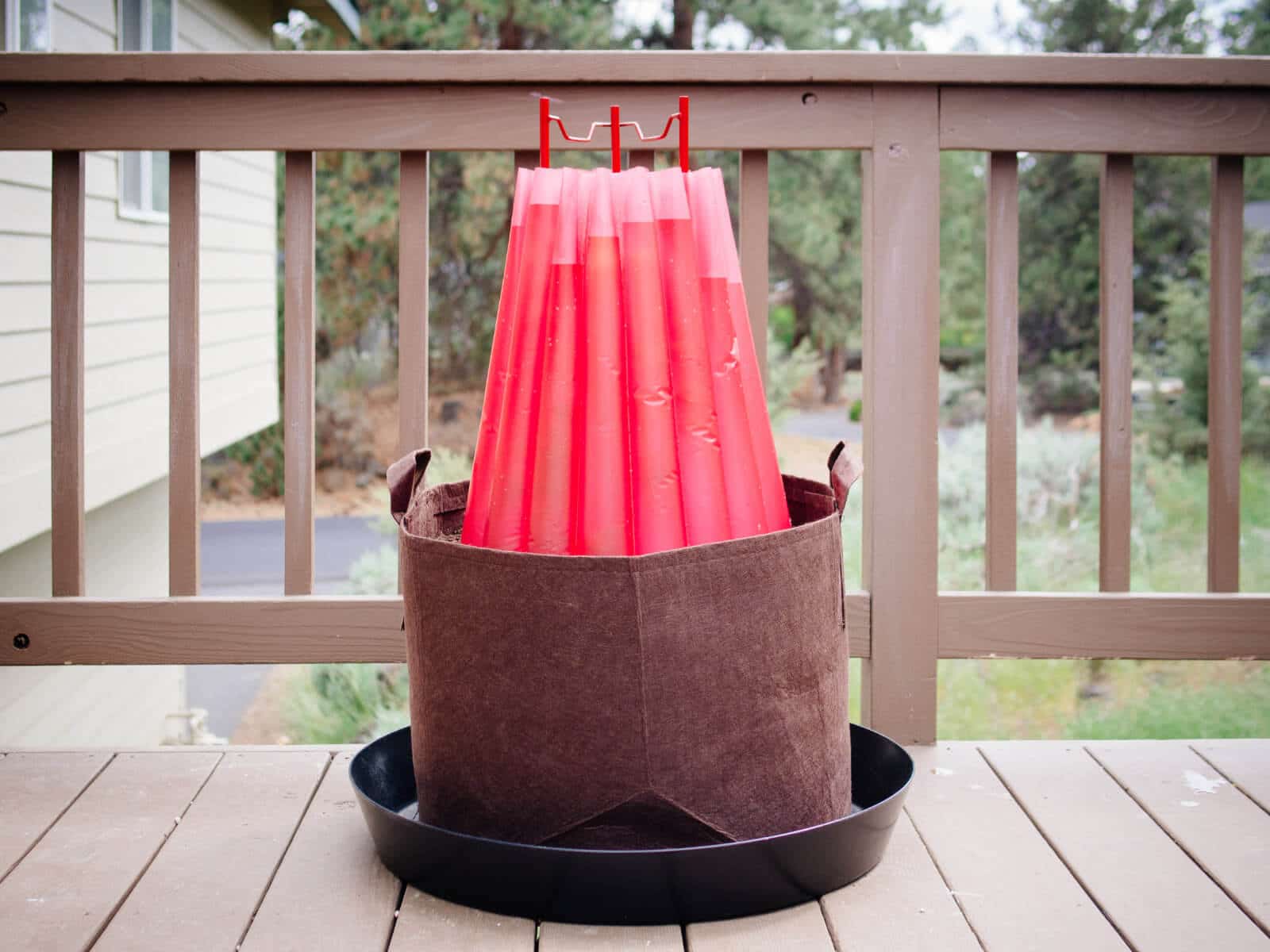
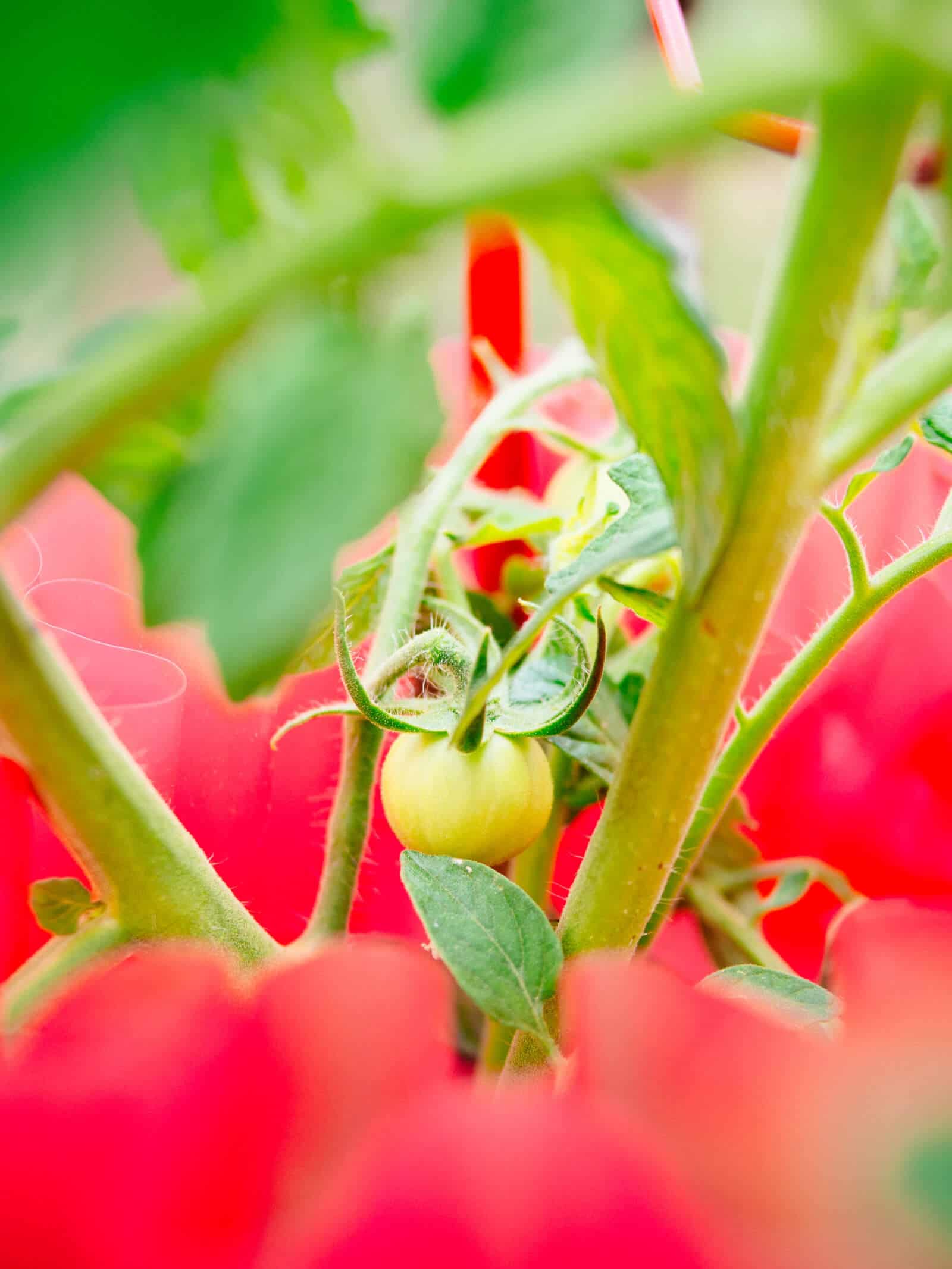
Because they can handle temperatures as low as 16°F, walls of water let you plant your tomatoes up to six weeks before your last frost date and keep them going for up to six weeks after the first freeze.
(They haven’t failed me yet, though I’ve personally never used mine below 28°F.)
They also keep out the wind, which makes them good for young, fragile plants that aren’t fully rooted in the ground yet.
“Walls of water” is basically a large ring of heavy-duty plastic that’s sectioned off into long tubes. The tubes are filled with water, and the “walls” are put on top of the plant. The tubes’ weight holds them up. You end up with what looks like a teepee around your plant.
Tip: Put the water walls on top of a bucket and fill the tubes with water until the walls can mostly stand on their own. Transfer the walls to your container over the plant, then continue filling them to the top with water.
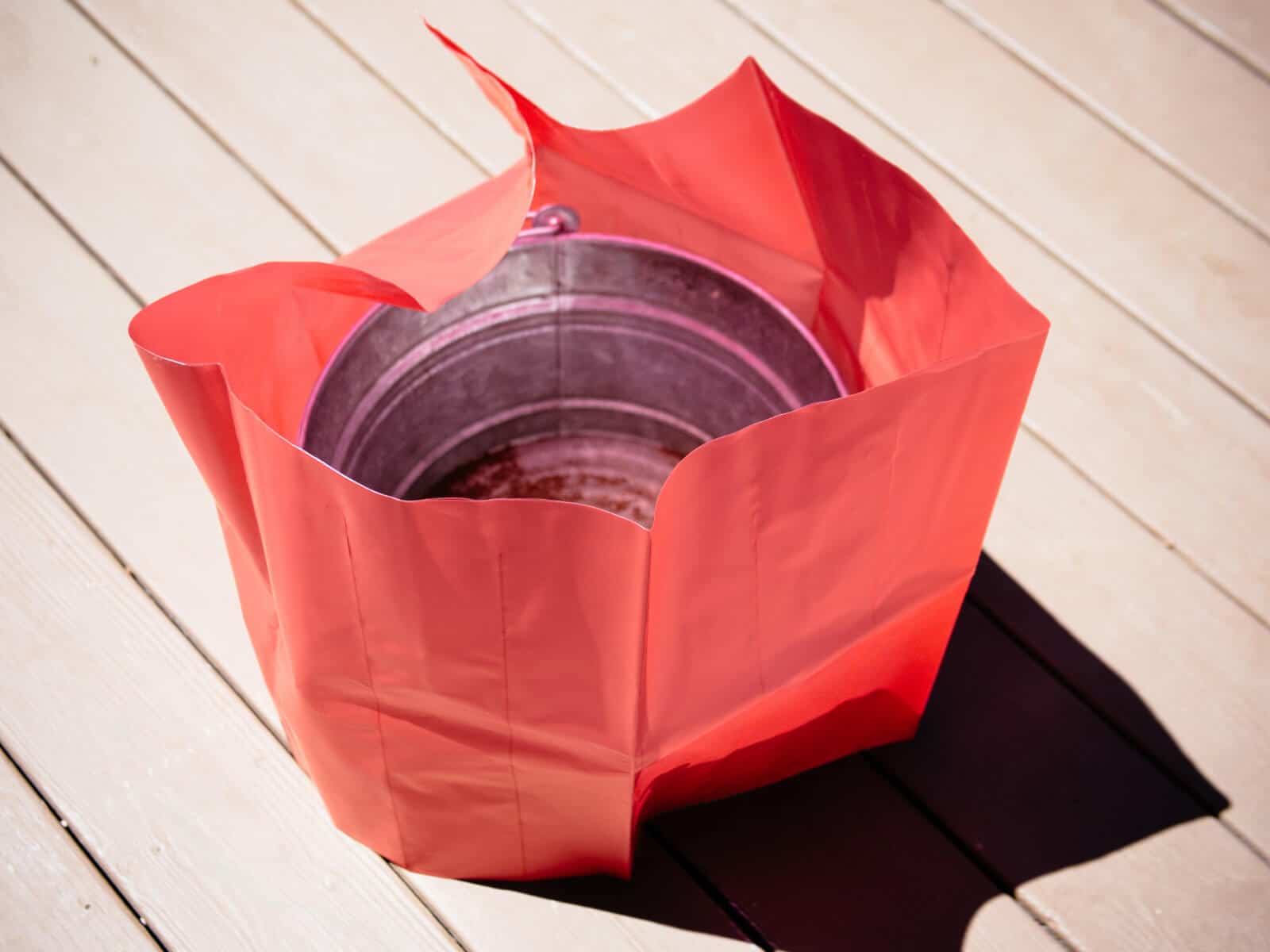
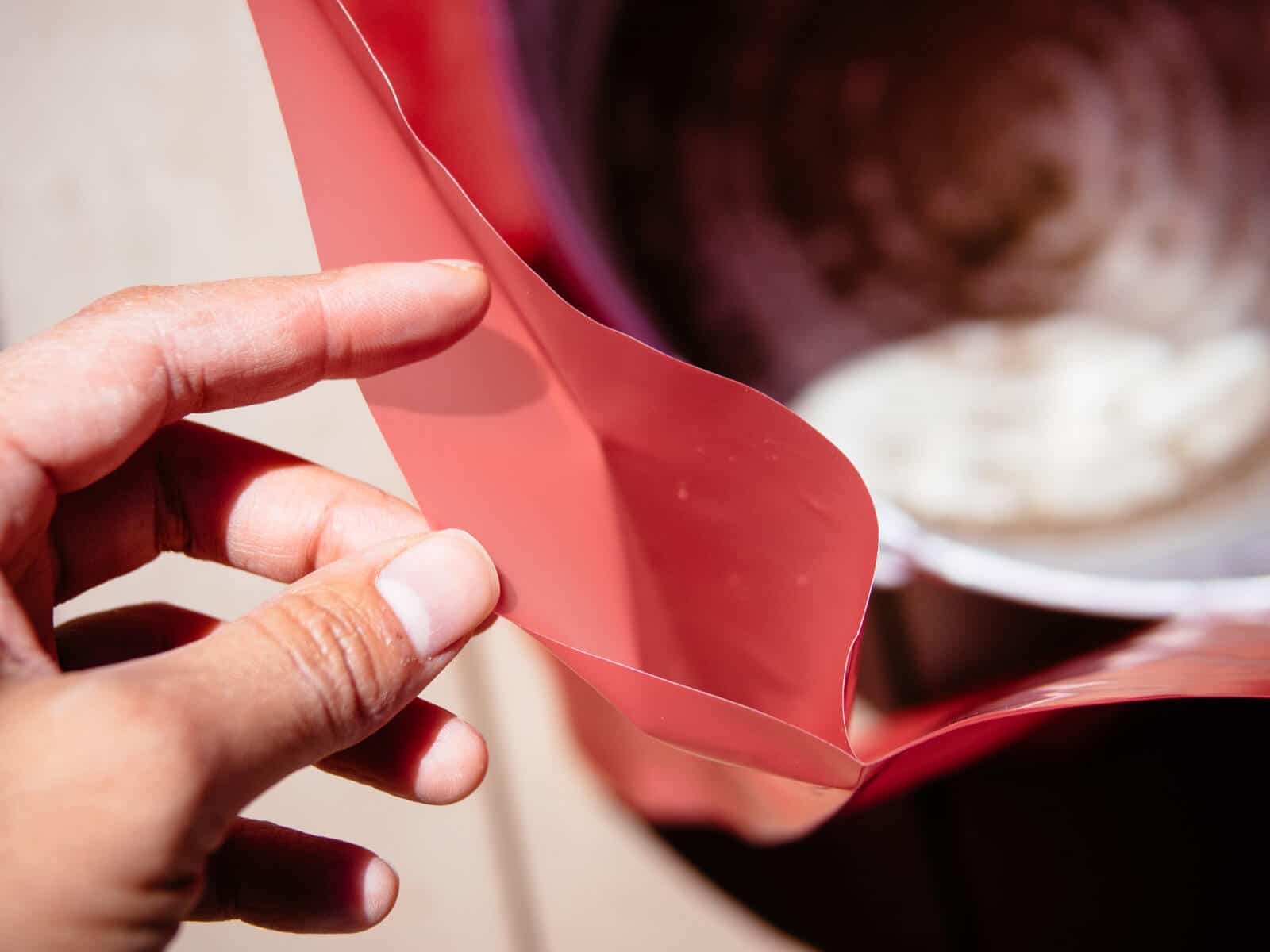

Water walls collect heat from the sun during the day and send it back out at night, like little greenhouses.
They do need to be refilled every so often because the water evaporates, but they work surprisingly well in colder climates, and I highly recommend them if you want to start growing things early.
I take mine down when my tomato plants are about an inch above the walls, or when I’m sure there is no longer any risk of frost.
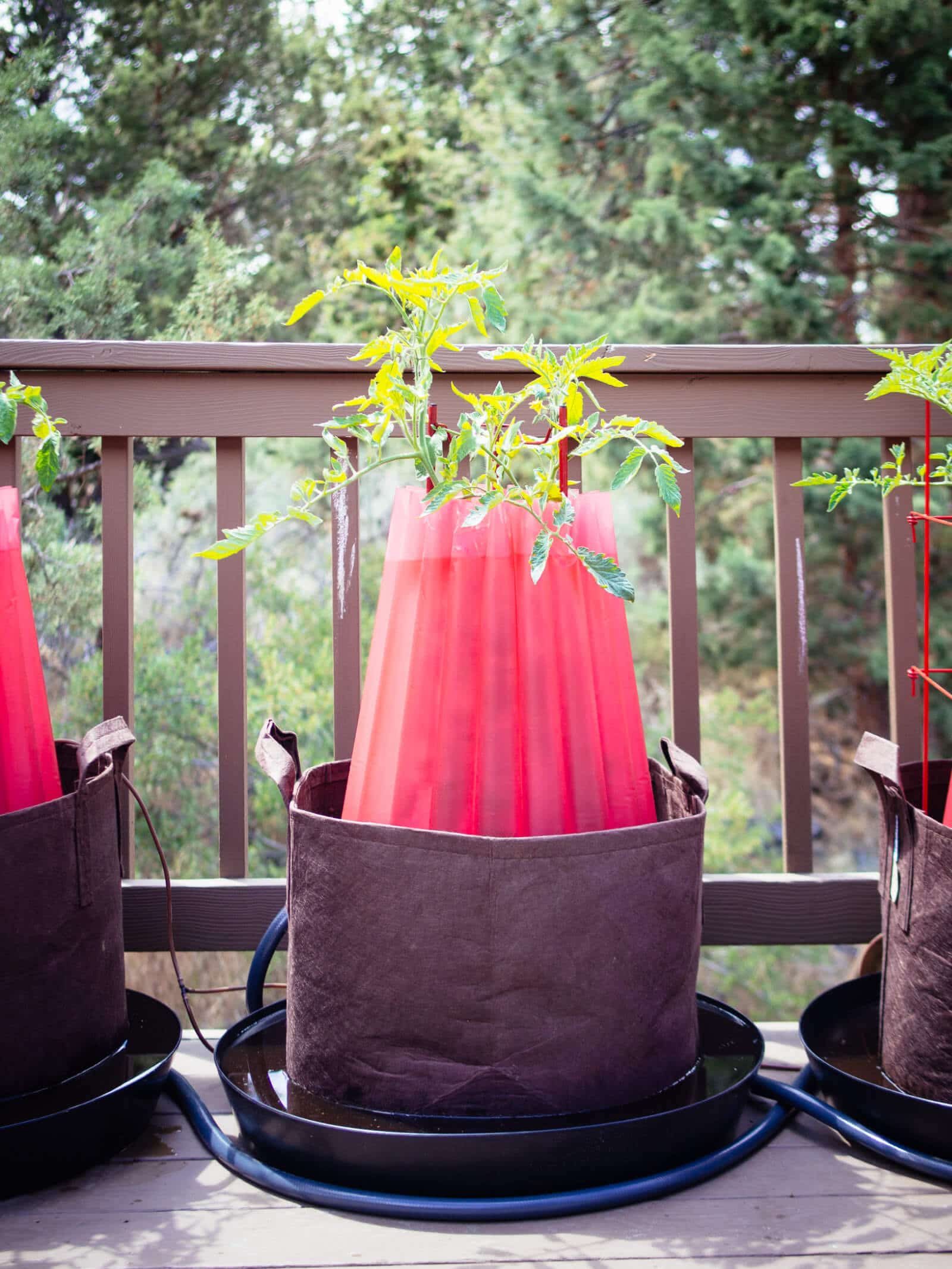
Push all the walls in until water spills out the top and onto the soil. This is an easy way to take down the tomato teepee.
You can roll the tubes down, lift them over the plant, let them dry, and then store them for next year. Then proceed with Step 9.
Don’t be shy with container size, and choose a fabric pot over a plastic pot.
When it comes to tomatoes, the bigger the pot, the better.
When planting, determinate types should be in at least 10-gallon containers, while indeterminate types need at least 20-gallon containers to do well.
Any smaller than these sizes and your plants may not be as productive as they could be.
My favorite type of containers are fabric pots, like these ones from Root Pouch. They come in either non-degradable or biodegradable versions, but for container gardening, I prefer the non-degradable Boxer line so I can reuse them year after year.
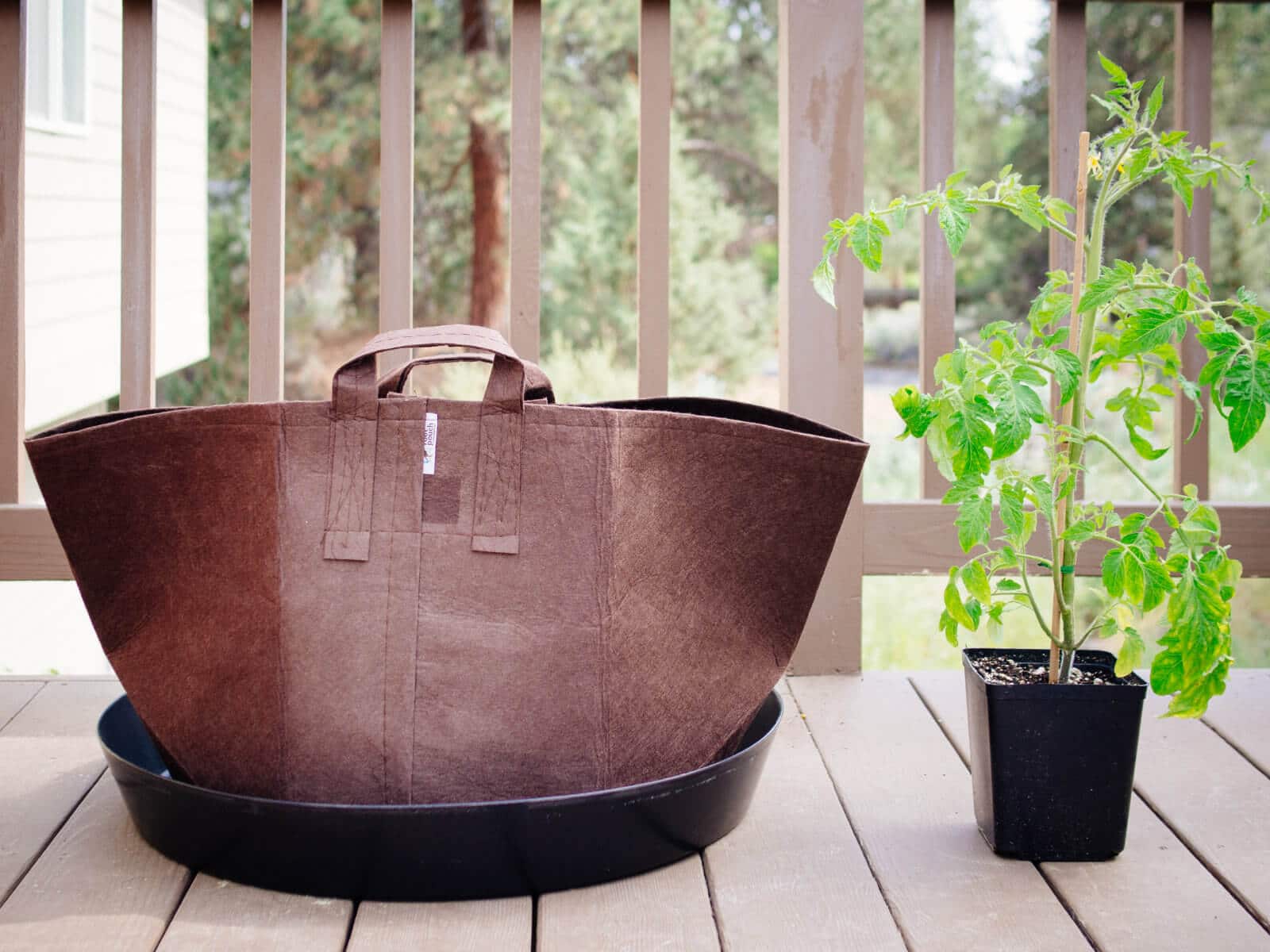
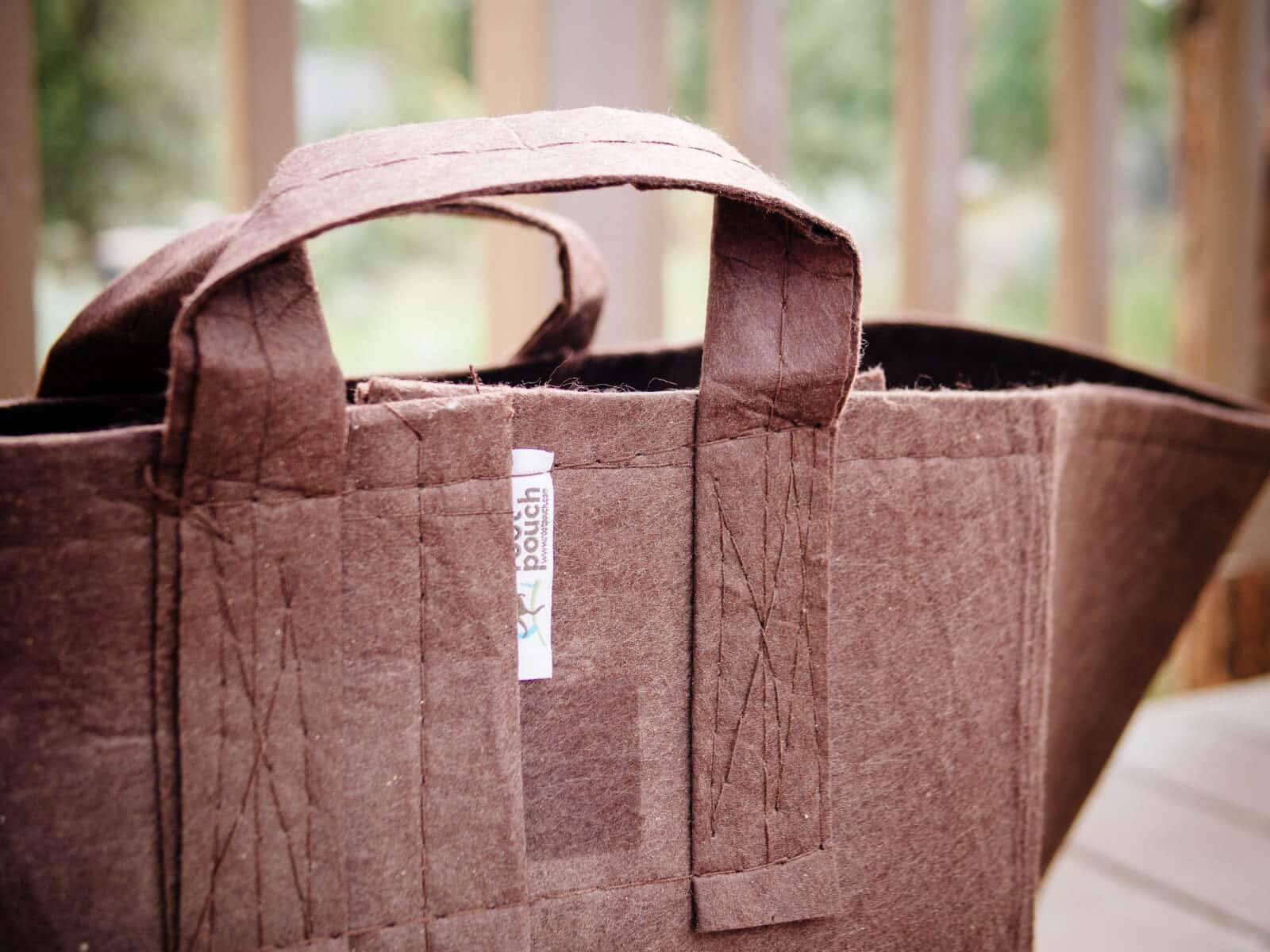
Fabric pots are beneficial for plants with extensive root systems because they naturally “air prune” the roots.
When you put plants in breathable fabric pots next to plants in non-porous plastic pots, you can really see the effects of air pruning.
When the roots of plants in plastic pots get long enough to touch the sides of the pot, they keep growing in a tight spiraling, kinking, and twisting pattern until they get rootbound.
Roots in fabric pots, on the other hand, are exposed to air as they grow. This exposure “burns off” the tips of the roots, which stops them from growing long and spindly. Instead, they branch off and form new, shorter, fibrous feeder roots.
Read more: Best Grow Bags for Your Garden
The plant’s dense network of branched roots helps it take in more water, use all the nutrients it can find, and protect itself naturally because its growth is spread out evenly in the soil, not just around the edges of the pot.

Fabric pots let water drain properly and improve oxygenation to the roots, which boosts the plant’s metabolic performance and, in turn, increases crop yields.
In cooler climates, however, black plastic pots do serve a practical function. They keep heat in and keep roots warm from late spring to early summer, which is when temperature changes can hurt tomato transplants the most.
On the other hand, black plastic pots might get too hot in the summer, so they need to be put somewhere cool to keep the rootball from getting too hot.
To keep the heat off of plastic pots, you can wrap or cover them with shade cloth, canvas, or towels. Office binder clips are great for holding them in place. Also, try to keep them off of surfaces that keep heat in, like concrete.
Whichever kind of container you use, be sure to place a heavy-duty saucer (I use this one) underneath before you load it up, and have it placed exactly where you want it—it’ll be very heavy to move later on.
In addition to keeping your deck or patio dry, the saucer will let your plant soak up any extra water that falls on it during a hot day.
How to Grow Tomatoes in Containers, Pots or Buckets. Container Gardening.
FAQ
How deep do containers need to be for tomatoes?
Should I water tomatoes in pots every day?
Do tomatoes in pots like full sun?
How many tomatoes can you plant in a container?
How do you grow a tomato plant in a pot?
#Add organic compost after every 15-20 days #Plant tomato plant as deep as possible. . #Taller varieties may need to be staked to provide support . #Place the pot in a sunny spot with 6 to 8 hours of full sun a day. #Keep soil moist.
Can you grow tomatoes in containers?
Tomatoes are one of the most productive crops you can grow in containers – 5kg (10 lbs) – off one plant is common. Each plant crops for a long period, giving you fresh tomatoes over several months. And last but not least, home grown tomatoes are a taste sensation! Do you have a favourite variety for containers?
Should you grow tomatoes in pots vs ground?
If you’re trying to decide between growing tomatoes in pots vs the ground, there are definitely advantages to using containers. The main one is that you can put them anywhere. If you have a shady yard, it allows you to maximize any sunny spots, whether that’s a patio, porch, balcony, or even your driveway.
- The Ultimate Guide to Growing Strawberries in Raised Beds - August 8, 2025
- No-Dig Garden Beds: The Easiest Way to Grow a Beautiful Garden - August 6, 2025
- How to Protect and Preserve Wood for Raised Garden Beds - August 6, 2025
